Kanto Ren review: fantastic sound, incredible value
Want a super stereo speaker system that doesn't cost the Earth? Kanto's Ren is a very accomplished offering for relatively little cash

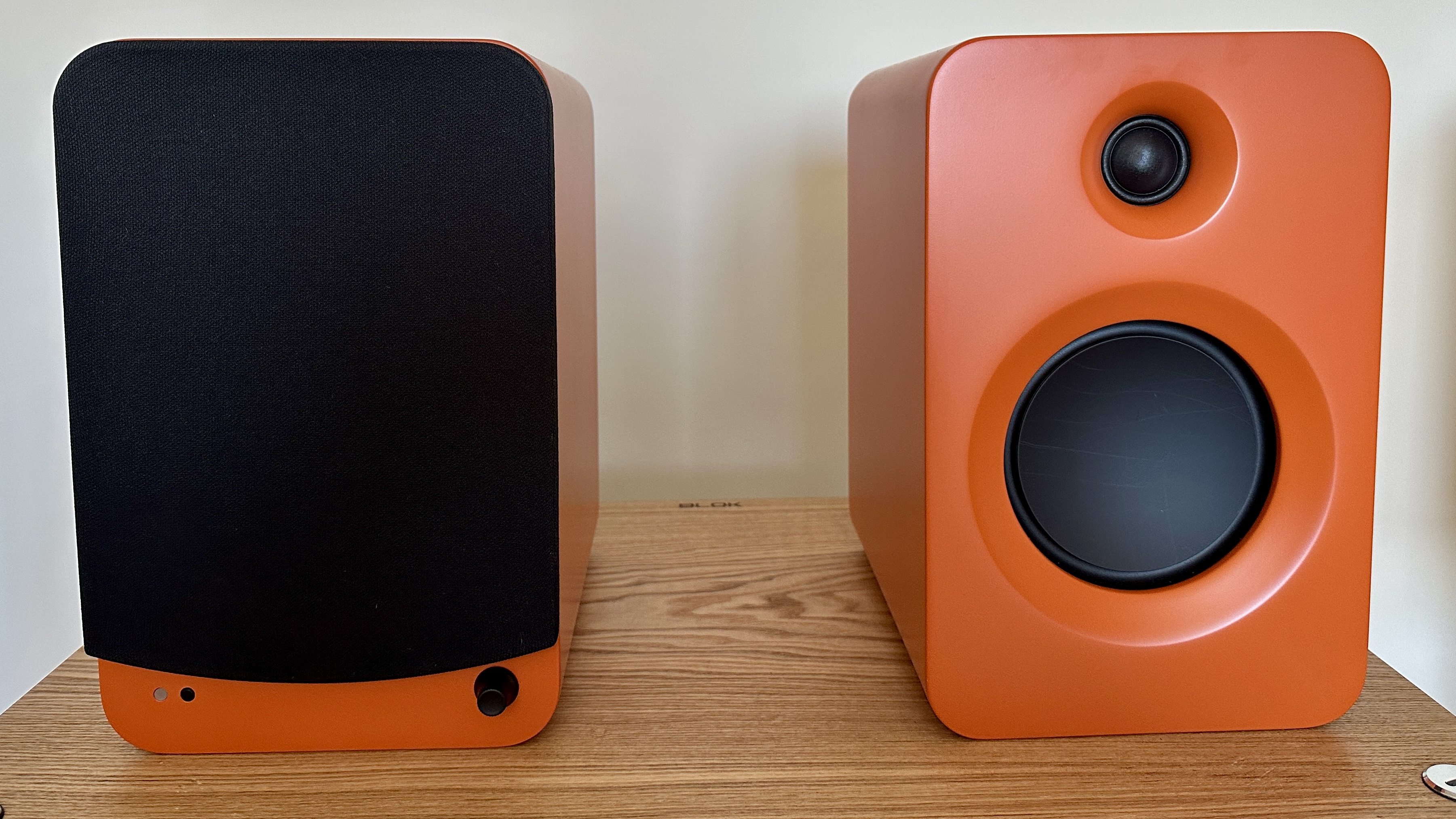
A system like this, at a price like this, is inevitably going to involve a compromise or two. What’s perhaps most remarkable about the Kanto Ren, however, is just how few and how mild those compromises are. Indeed, if the bass response was as lively and varied as the rest of the frequency range, it would be approaching ‘perfect’ – but it's still a 5-star product on account of its stellar value.
-
+
Bold, assertive and quite deft sound
-
+
High standard of build, good variety of options for finish
-
+
Decent specification and feature set
-
-
Fractionally lumpy low frequency response
-
-
Remote control can take its time
-
-
Far from short of competition
Why you can trust T3

Kanto Audio doesn’t seem to want to make life easy for itself. Its latest product, the Ren powered stereo speaker system on review here, has dropped straight into the middle of a fairly fiercely contested sector of the market.
While the competition is plentiful and, in some cases, very capable indeed, Kanto is a company that is, at the very least, intrepid. So is its overt confidence about the Ren's chances among the best wireless speakers misplaced or most reasonable?
Price & Availability
The Kanto Ren launched at the very end of 2024, and in the United Kingdom a pair is priced at £599. In the United States it will set you back $599. Australia, meanwhile, asks AU$1199 or thereabouts.
The number of alternative products from alternative brands is considerable, of course, and getting more considerable by the day. Just off the top of my head, there are competing models from Audio Pro, Elac, Q Acoustics, Technics... the list goes on.
Kanto has it all to do if the Ren is going to stand out from the crowd for reasons other than the fact that you can buy them in an orange colourway.
Features & What's New?

We’re all used to powered stereo speaker systems like this one by now, aren’t we? The Kanto Ren is a variation on a theme, sure enough, but that’s not the same as saying it’s in any way deficient.
At the front, each speaker features a 25mm silk dome tweeter above a 133mm concave aluminium mid/bass driver. At the rear, each has a fairly sizeable bass reflex port above a pair of speaker cable binding posts.
Get all the latest news, reviews, deals and buying guides on gorgeous tech, home and active products from the T3 experts
The drivers are powered by a total of 100 watts of Class D power – apart from the obvious fact that each speaker gets 50 watts to play with, the details of how it’s divided between the tweeter and the mid/bass driver are not forthcoming. This arrangement is, according to Kanto, good for a frequency response of 50Hz to 22kHz.
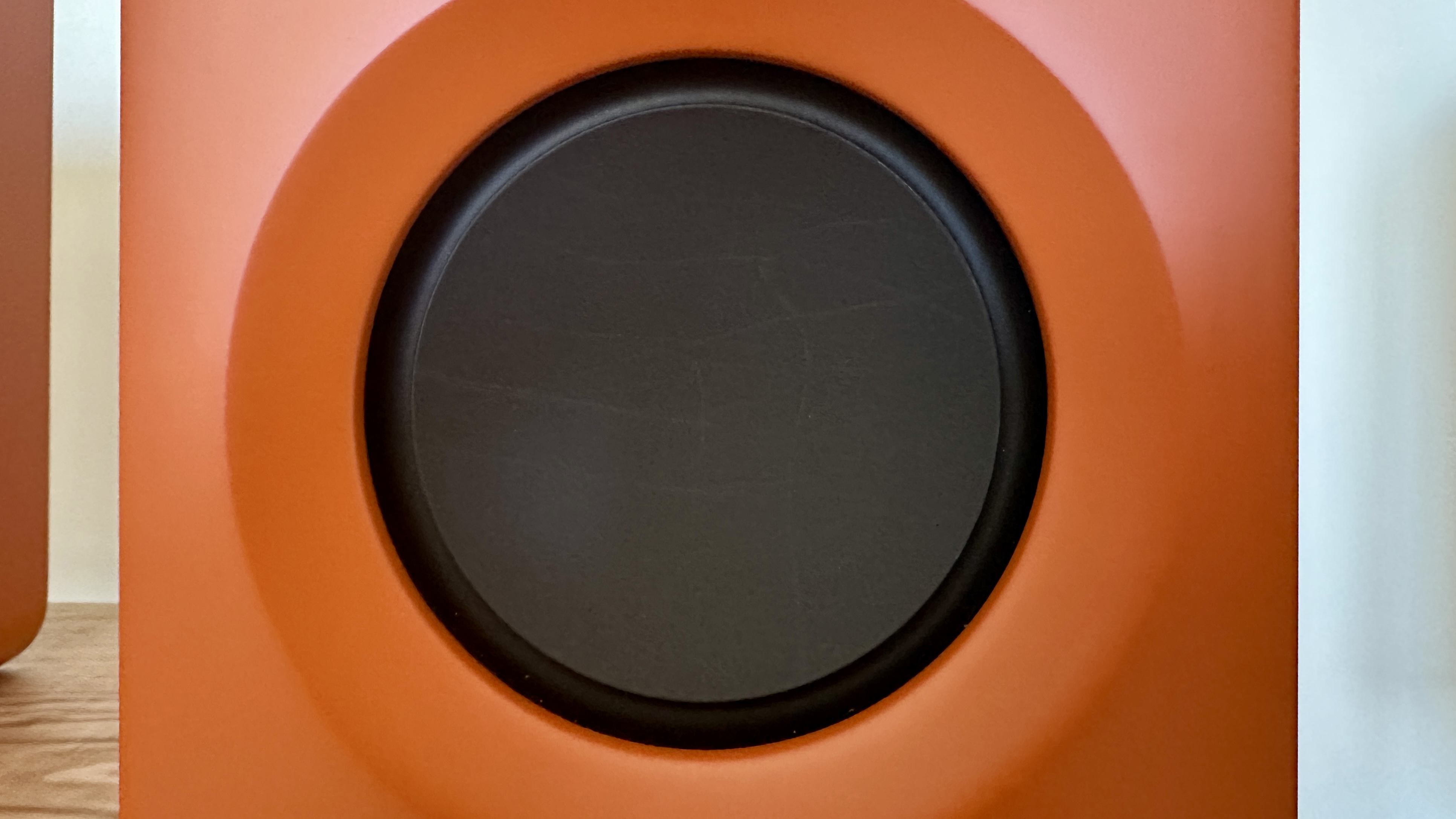
As is generally the case in products like this, one of the speakers is in charge and the other does as it's told. You can spot the boss quite easily: it’s the one with the volume control on its front baffle and a whole lot of connectivity on the rear, and it’s the heavier of the two, because it’s the one with all the amplification on board.
So this speaker features an HDMI ARC, digital optical and USB-C digital inputs, along with line-level stereo RCA and 3.5mm analogue options too. There’s a pre-out for use with a subwoofer, a fig-8 mains power connection along with an on/off switch, and a USB-A slot for charging your phone or what-have-you.
It’s also the speaker that pairs wirelessly with your source of Bluetooth connectivity. The Ren uses Bluetooth 5.3, and is compatible with SBC and AAC codecs.
Performance
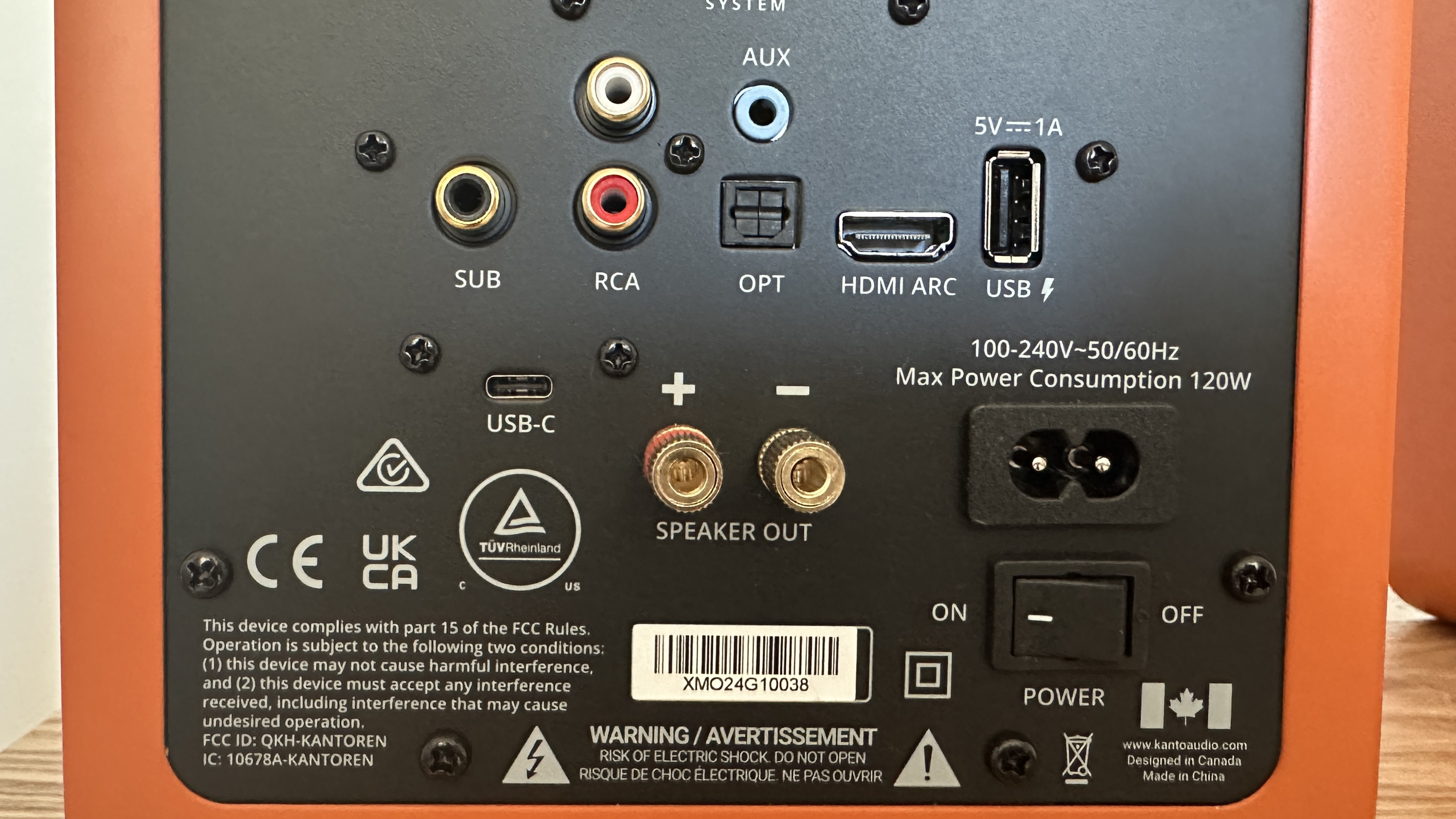
It’s fair to say the Ren sounds best through one of its digital inputs, most specifically through the HDMI ARC input – which means it’s a fully viable alternative to a soundbar.
But it’s equally fair to say that the drop-off in quality between this input and all your other options is mild in the extreme. No matter how you get your music on board – via a digital connection, an analogue connection or wirelessly via Bluetooth – this is a bold, upfront and remarkably full-scale listen.
This is a big-sounding system by prevailing standards, and it establishes a nicely laid-out and properly controlled soundstage. Even if your music or movie content is complex, there’s plenty of space for each element to do its thing without being too obviously squeezed by whatever’s going on around them.
There’s a fair amount of dynamic headroom available for when the volume or intensity ramps up, and the Kanto is equally attentive to the smaller variations in harmonics during the quieter moments too.
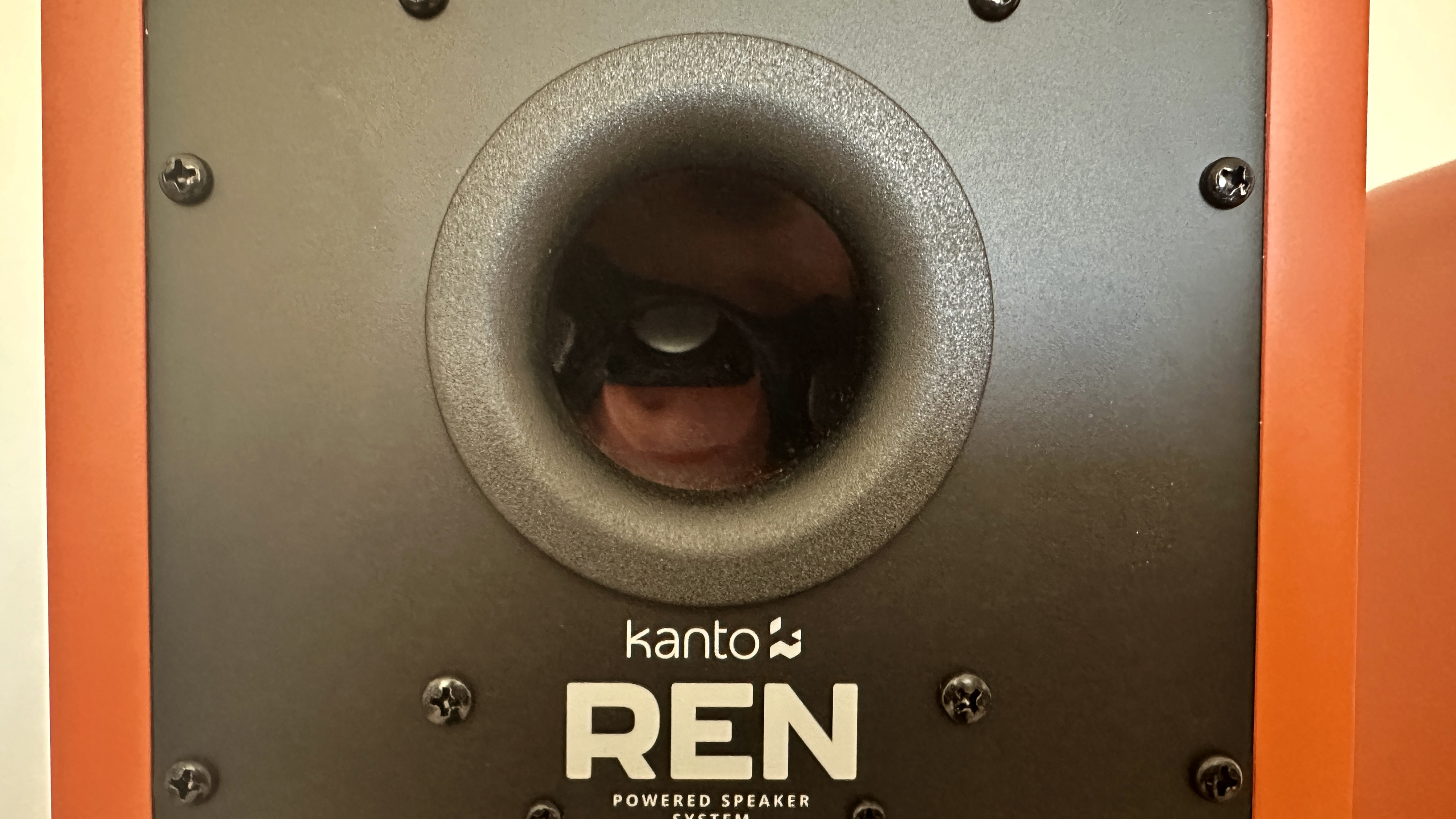
In fact, detail levels are impressively high across the board. The Ren is more than capable of identifying and contextualising even the more minor occurrences in a recording or a soundtrack, and the generous nature of its soundstage means this attention to detail is never at the expense of the overall picture.
There’s a togetherness and a unity to the way the Kanto presents the information it’s given to deal with that’s not always a given in products of this type costing this kind of money.
And with a caveat or two, its tonal balance and frequency response is enjoyably judged. The top-end has a degree of bite but also a fair amount of substance, and the midrange presentation is direct and quite eloquent. There’s plenty of insight and variation, and the tonality is commendably neutral from the very top end until we reach the lower frequencies.
It’s at the bottom-end that things get just slightly problematic. There’s no shortage of heft of body here, and the Ren controls the bottom end respectably enough – rhythmic expression isn’t bad at all.
But where the rest of the frequency range enjoys a quite fleet-footed and nicely varied character, bass sounds are a little monotonal and lacking in variety. Detail levels fall away somewhat – and this is made all the more obvious by the ease with which the Kanto system digs out the finest details from elsewhere in the frequency range.
Design & Usability

At 277 x 178 x 215mm and either 3.9kg or 4.5kg (depending on if it’s the speaker packing the amplification), the Kanto Ren speakers are of unremarkable dimensions and completely manageable weight.
The nicely curved, impeccably finished cabinets look good, and combined with the choice of finishes – matte versions of black, white, grey, blue or the orange of my review sample – they look a little more expensive than they are. The fact that the grilles attach magnetically, and so don’t require any holes in the baffle to connect them, doesn’t do any harm either.
Kanto supplies eight little rubber feet in the box along with the speakers, a length of bog-standard speaker cable, a fig-8 mains lead and a remote control handset. The feet can be used to isolate the speakers from the surface on which they’re positioned, and there’s enough cable to ensure they can be a decent distance apart (which helps with stereo imaging).
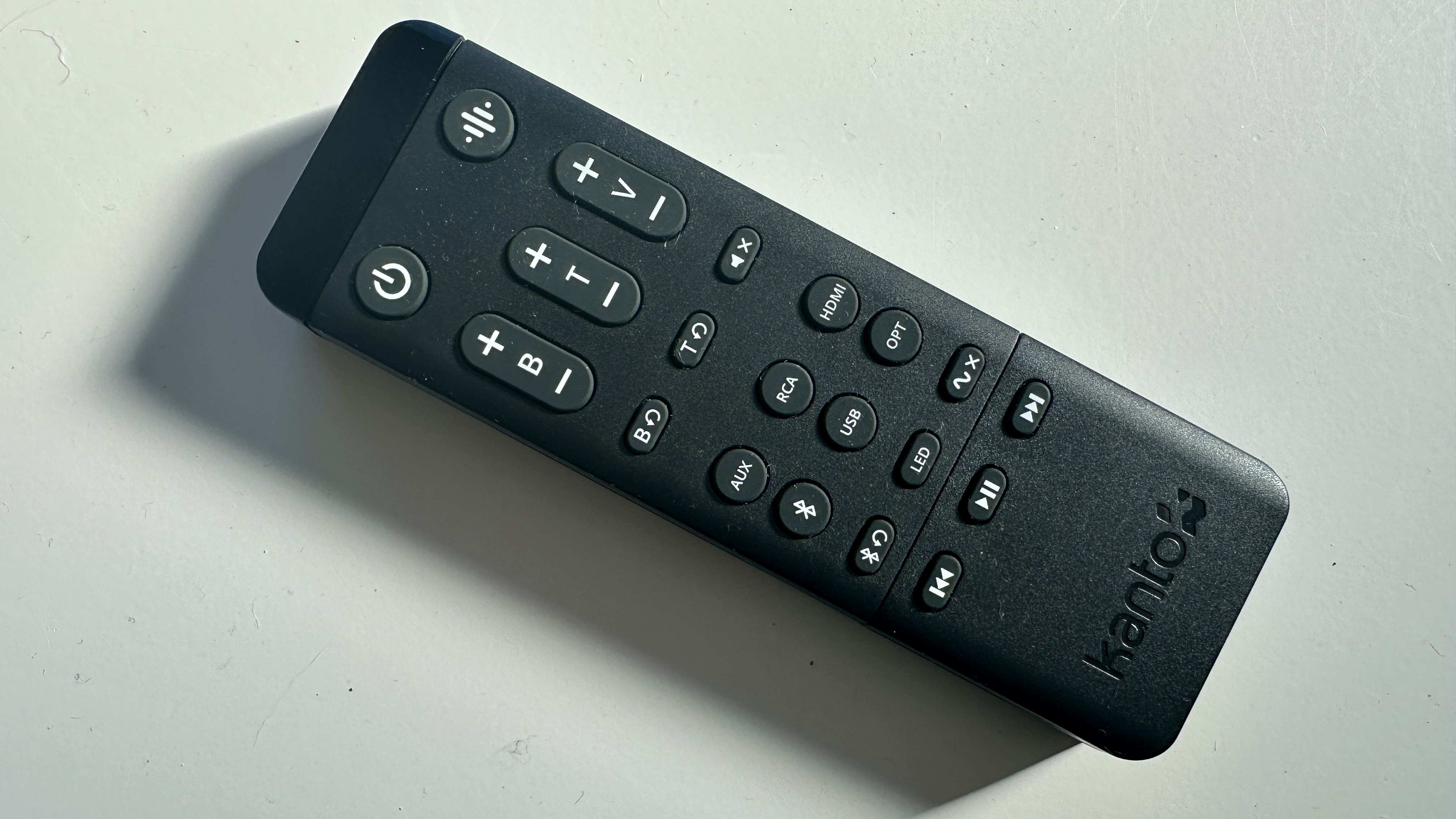
Using the Ren couldn’t be much more straightforward. The boss needs connecting to mains power, of course, and any physical connections need to be made to the back panel of this speaker too. Join the speakers together using the supplied cable, get them positioned, and you’re very nearly in business.
The primary speaker has a volume control and an LED indicator on the bottom of its front baffle, but other than that you’ll need the remote control handset to get what you want. Happily, it’s a decently chunky device that’s a cut or two above the norm – and it covers every eventuality.
As well as ‘power on/off’, Bluetooth pairing and ‘volume up/down’, the remote features independent bass and treble adjustment (each with a dedicated ‘reset’ button), and button to cycle through ‘sound modes’ (which are ‘normal’, ‘night mode’ and ‘vocal boost’). There’s a button to mute the output of the subwoofer (should you have one connected), a button to cycle through levels of LED intensity, and individual buttons for input selection.
There are playback buttons to control Bluetooth and USB sources. And you can let the main speaker know if it’s the left or the right channel by holding down either the ‘skip forwards’ or ‘skip back’ button for 5 seconds. It’s a superior example of the type that’s supplied with pretty much all of the Ren's price-comparable rivals, and it makes operating the system pretty painless – although it could be a little more rapid in its responses.
Kanto Ren review: Verdict
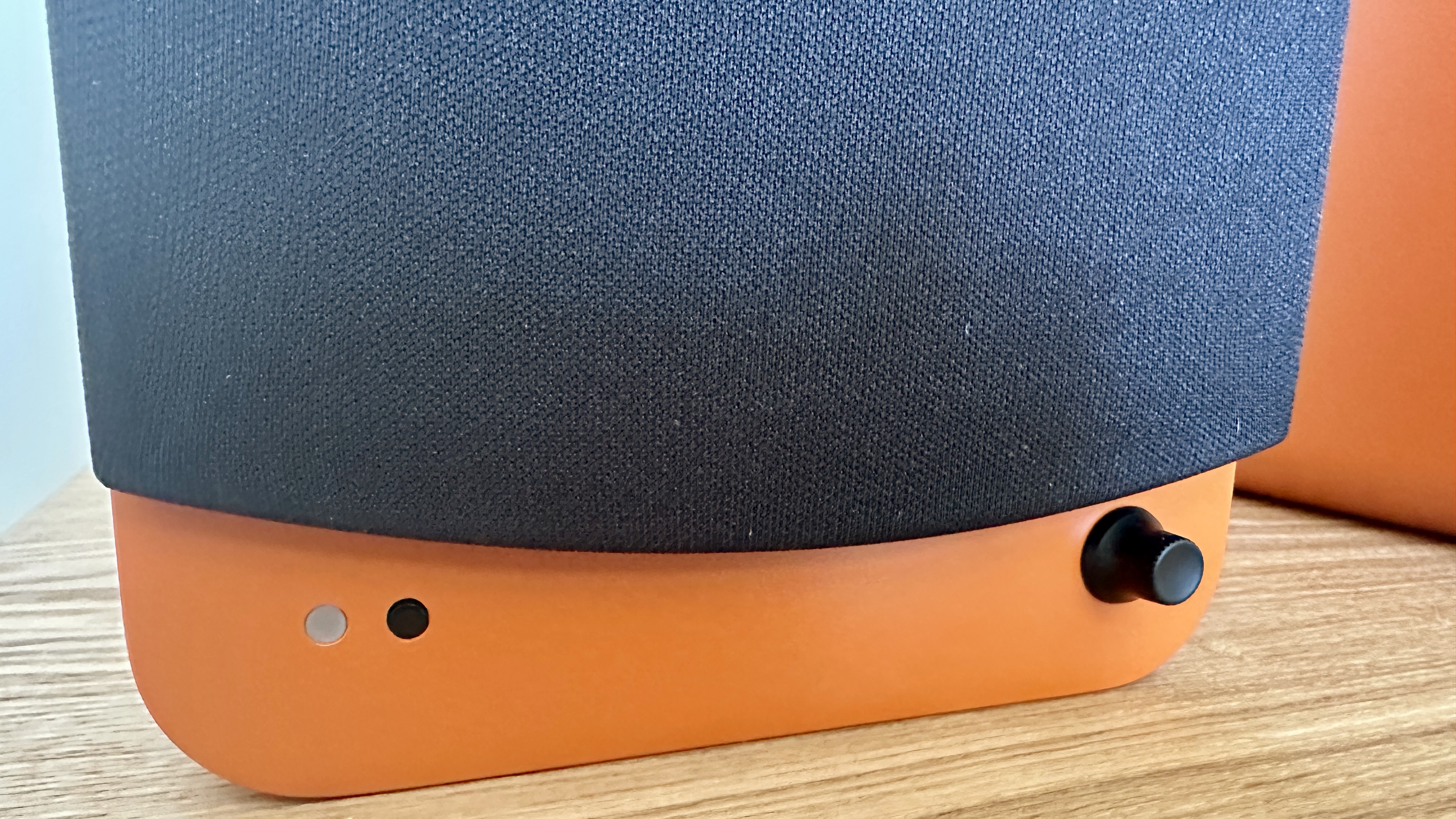
Just as happy as a quasi-soundbar as a two-channel audio system, the Kanto Ren has plenty going for it – and it looks almost as good as it sounds.
If the bass response was as lively and varied as the rest of the frequency range, it would be approaching ‘perfect’. As it is, however, it's very, very good indeed – and certainly a 5-star product on account of its stellar value.
Also Consider
You can pick up a pair of Q Acoustics M20 for just £349 these days, and at that money they’re a bargain – the system sounds considerably more expensive than that. It’s not of the most desktop-friendly proportions, though.
If you’re looking for something a bit more manageable, then the Ruark MR1 MkII are well worth considering – they sound great, although don’t have anything like the scale of the Ren.
Perhaps the best like-for-like comparison around right now is the Elac Debut ConneX, especially in limited-edition ‘Adsum’ trim – good looks, great sound. Just like the Kanto.
Simon Lucas is a freelance technology journalist and consultant, with particular emphasis on the audio/video aspects of home entertainment. Before embracing the carefree life of the freelancer, he was editor of What Hi-Fi? magazine and website – since then, he's written for titles such as Wired, Metro, the Guardian and Stuff, among many others. Should he find himself with a spare moment, Simon likes nothing more than publishing and then quickly deleting tweets about the state of the nation (in general), the state of Aston Villa (in particular) and the state of his partner's cat.
You must confirm your public display name before commenting
Please logout and then login again, you will then be prompted to enter your display name.
